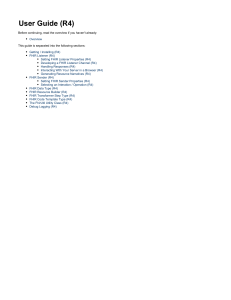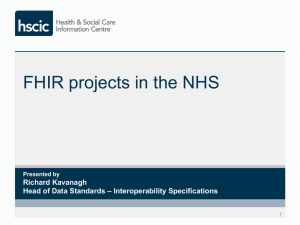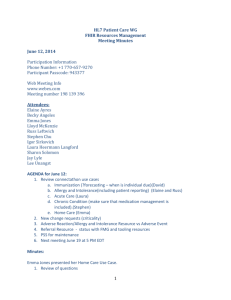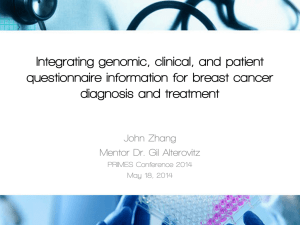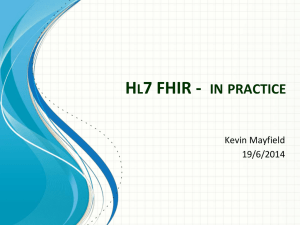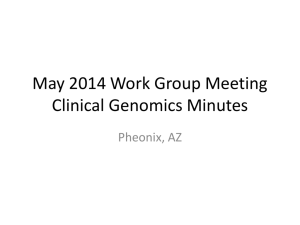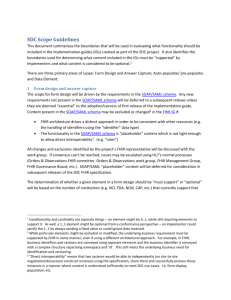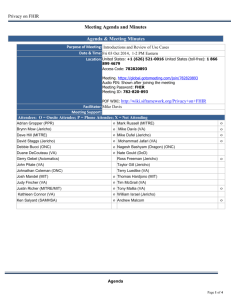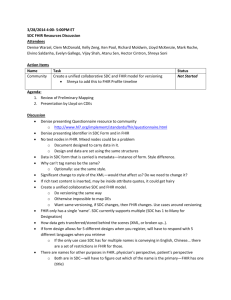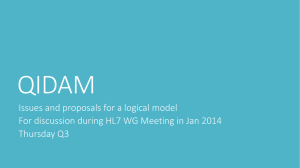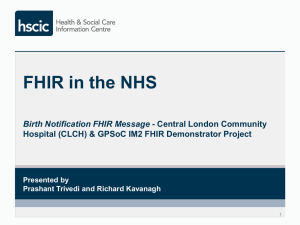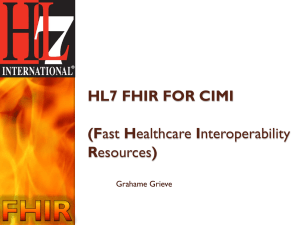The Future of Standards John D. Halamka MD HITSC Workplan
advertisement
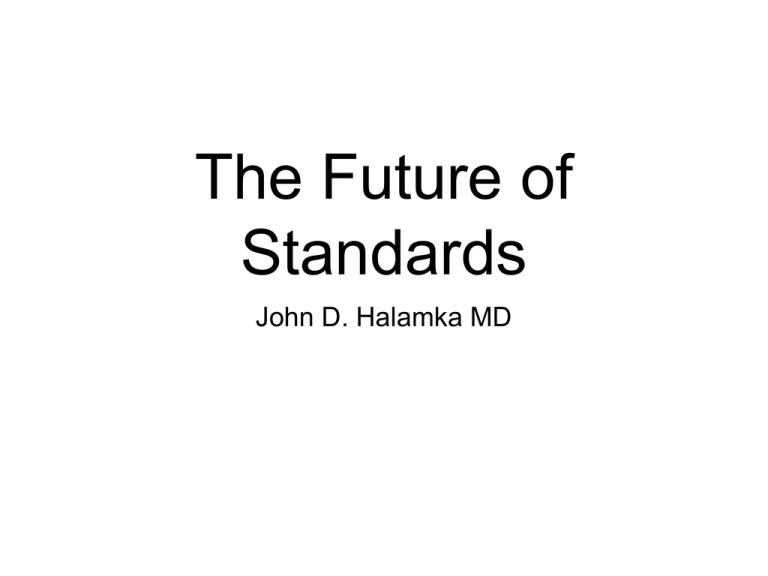
The Future of Standards John D. Halamka MD HITSC Workplan Activities S&I Current Activities Potential New S&I Initiatives Current S&I Ballots in Process Feedback from the Trenches • Content • Vocabulary • Transport Content • • • • • The RIM is important for creating content standards but should be invisible to implementers A 16 year old without healthcare domain knowledge should be able to create an arbitrary structured content document with novel data fields In the near term, CCDA and FHIR must co-exist. In the future FHIR may supplant CCDA JSON is easier to generate and parse than XML HL7 3.0 is not going to be widely used for messaging in the US Vocabulary • The Value Set Authority Center has collected almost all needed vocabulary and code sets • There are a few gaps - uniform adoption of LOINC for allergy/severity/reaction, UCUM for units of measure, EHR support for structured data capture Transport • RESTful approaches that use OAuth2 and OpenID are easier to implement than SMTP/SMIME or XDR with PKI. • Trust fabric solutions are still evolving and trust anchor exchange is what is working now • Push, Pull and View are all valid interoperability architectures “Healthcare is not special” • We need to abandon the idea that healthcare needs unique approaches to exchanging payloads of data. • HTML and HTTP = FHIR and REST/OAuth2/OpenID • Simple and functional is more important than addressing every edge case The Path to the Future • • • • • Certification needs to be redesigned to focus on interoperability using real clinical scenarios Optionality needs to be eliminated (OR means AND and destroys in interoperabilty) Modularity needs to be enabled Implementation Guides should not be based on “indirection” but should stand alone How do we create an “app” ecosystem in a world of EHR consolidation/attrition? The Next 3 Years • • • • • For now, continue version 2.x for messaging transactions in the US - ADT, orders, results until it can be replaced by FHIR For now, continue CCDA for transitions of care until it can be replaced by FHIR Aspire to a future of FHIR over REST using JSON with OAuth2/Open ID authentication Reduce optionality - OR means AND Focus on the building blocks and not narrow fixed use cases i.e. require APIs in all EHRs as part of Meaningful Use Stage 3 Questions? • http://geekdoctor.blogspot.com
